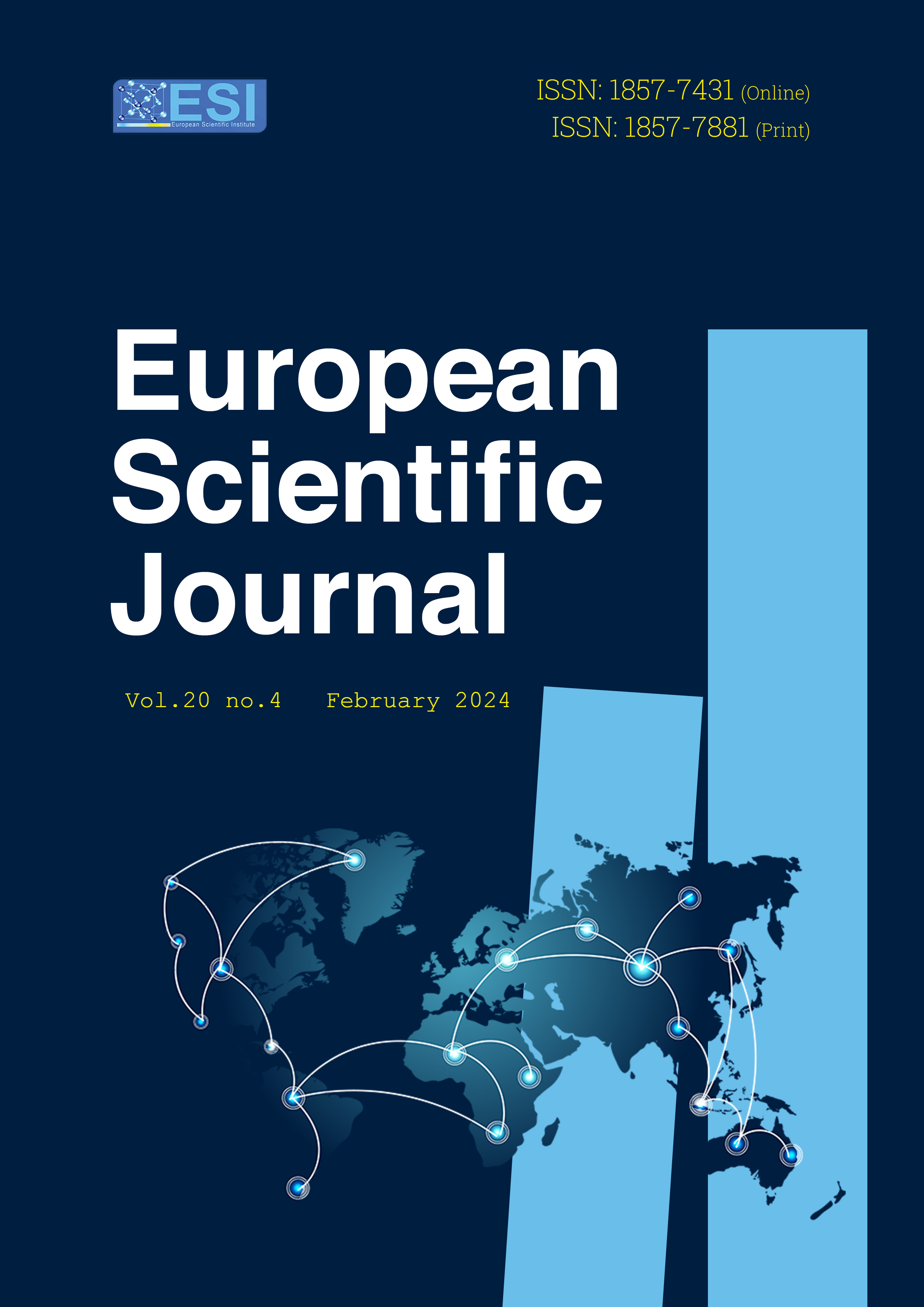Effect of Parent’s International Migration on the Educational Performances of Left-Behind Children in Morocco
Abstract
This paper focuses on examining the effects of parent’s international migration on the educational outcomes of left-behind children. This, however, is with special emphasis on how family environment and school characteristics affects the educational achievements of left-behind children. A sample was selected from the survey conducted in Fkih Ben Salah, a small town in Morocco, within the Béni Mellal-Khénifra region. This survey, administered in 2020, included 407 children from 16 primary schools. The results of the propensity score matching method showed that the international migration of parents had a significant effect on the school performance of their left-behind children. Furthermore, the Oaxaca-Blinder decomposition analysis showed that 36.34% of the differences in the children’s school performance during the first semester of the year 2020 can be explained by factors such as student–teacher ratio, class size, and socio-economic index of class, accounting for 12.82%, 38.47%, and 31.35%, respectively. The empirical findings also revealed that left-behind children are at risk of social exclusion, especially in public schools. Targeted interventions should be adopted to improve the educational outcomes of left-behind children. In addition, these interventions should assist immigrant parents in facilitating their children’s first journey and enhancing the student-teacher ratio.
Downloads
Metrics
PlumX Statistics
References
2. Antia, K., Rodoreda, A. B., & Winkler, V. (2022). Parental migration and left-behind children in Georgia – school teachers’ experience and perception : A qualitative study. BMC Public Health, 22(1), 2077.
3. Antman, F. M. (2012). Gender, educational attainment, and the impact of parental migration on children left behind.
4. Arguillas, M. J. B. & Williams, L. (2010). The Impact of Parents’ Overseas Employment on Educational Outcomes of Filipino Children. International Migration Review, 44(2), 300‑319.
5. Bai, Y., Zhang, L., Liu, C., Shi, Y., Mo, D., & Rozelle, S. (2018). Effect of Parental Migration on the Academic Performance of Left Behind Children in North Western China. The Journal of Development Studies, 54(7), 1154‑1170.
6. Blinder, A. (1973). Wage discrimination: Reduced for and structural estimates. The journal of Human Ressources,8(4),436.
7. Bouoiyour, J. & Miftah, A. (2016). The Impact of Remittances on Children’s Human Capital Accumulation: Evidence from Morocco. Journal of International Development, 28(2), 266‑280.
8. Dunusinghe, P. (2021). Impact of Parental Migration on Children’s Educational Performance: Evidence from Sri Lanka. Journal of Education and Human Development, 10(1).
9. Giannelli, G. C. & Mangiavacchi, L. (2010). Children’s Schooling and Parental Migration : Empirical Evidence on the ‘Left‐behind’ Generation in Albania. LABOUR, 24(s1), 76‑92.
10. Hill, H. C. (2017). The Coleman Report, 50 Years On : What Do We Know about the Role of Schools in Academic Inequality? The Annals of the American Academy of Political and Social Science, 674(1), 9‑26.
11. Ibourk, A. & Bensaïd, M. (2014). The impact of remittances from Moroccan migrants on the education of their children left behind in Morocco. Migration Society, N° 155(5), 13.
12. Jones, A., Sharpe, J., & Sogren, M. (2004). Children’s experiences of separation from Parents as a Consequence of Migration. The Caribbean Journal of Social Work, 3, 89‑109.
13. Karam, F. & Decaluwe, B. (2007). The effects of migration on Moroccan unemployment: a static computable general equilibrium analysis.
14. Lahaie, C., Hayes, J. A., Piper, T. M., & Heymann, J. (2009). Work and family divided across borders : The impact of parental migration on Mexican children in transnational families. Community, Work & Family, 12(3), 299‑312.
15. Marzovilla, O. & Mele, M. (2015). Remittances, Economic Growth, Exchange Rate Regime : The Case of Morocco. 71.
16. Meyer, D. & Shera, A. (2017). The impact of remittances on economic growth : An econometric model. EconomiA, 18(2), 147‑155.
17. Oaxaca, R. (1973). Male-Female Wage Differentials in Urban Labor Markets. International Economic Review, 14(3), 693.
18. OECD (2017). Quelle est l’incidence des migrations sur le développement au Maroc ? In OCDE, Interactions entre politiques publiques, migrations et développement au Maroc (p. 81‑104). OECD.
19. Rosenbaum, P. R. & Rubin, D. B. (1983). The central role of the propensity score in observational studies for causal effects. Biometrika, 70(1), 41‑55.
20. Sawyer, A. (2016). Is Money Enough? : The Effect of Migrant Remittances on Parental Aspirations and Youth Educational Attainment in Rural Mexico. International Migration Review, 50(1), 231‑266.
21. Schnettler, B., Orellana, L., Sepúlveda, J., Miranda, H., Grunert, K., Lobos, G., & Hueche, C. (2017). Psychometric properties of the Multidimensional Students’ Life Satisfaction Scale in a sample of Chilean university students. Suma Psicológica, 24(2), 97‑106.
22. Senaratna, B. (2012). Left-behind children of migrant women : Difficulties encountered and strengths demonstrated. Sri Lanka Journal of Child Health, 41(2), 71.
23. Song, S., Chen, C., & Zhang, A. (2018). Effects of Parental Migration on Life Satisfaction and Academic Achievement of Left-Behind Children in Rural China—A Case Study in Hubei Province. Children, 5(7), 87.
24. Stark, O. & Bloom, D. E. (1985). The New Economics of Labor Migration. The American Economic Review, 75(2,), 173‑178.
25. Tabit, S. & Moussir, C.-E. (2017). Impact Of Migrants’ Remitances On Economic Growth : Case Of Morocco. International Journal of Innovation and Applied Studies, 20(1), 226‑233.
26. Taylor, J. E., Arango, J., Hugo, G., Kouaouci, A., Massey, D. S., & Pellegrino, A. (1996). International Migration and Community Development. Population Index, 62(3), 397‑418.
Copyright (c) 2024 Aicha El Alaoui, Salah Ahbala

This work is licensed under a Creative Commons Attribution 4.0 International License.








